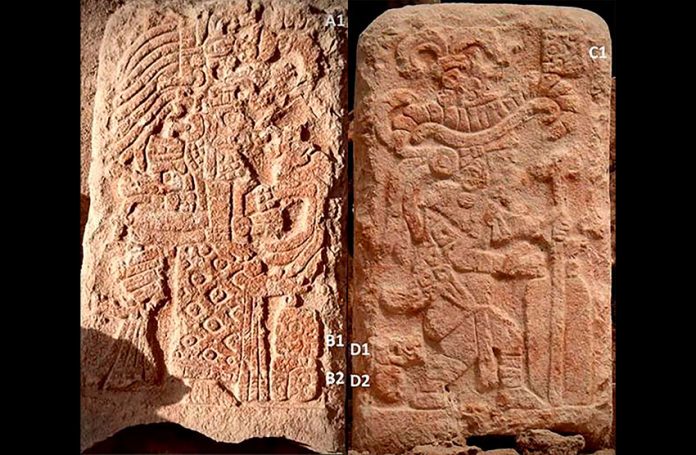In the archeological site of Uxmal in the Yucatán peninsula, a Maya stela depicting a god and a goddess has been discovered by a technical team headed by the archeologist José Huchim Herrera. The monument could represent the duality between life and death.
The director of the National Institute of Anthropology and History INAH, Diego Prieto, announced during AMLO’s Thursday press conference the finding of the Maya stela, which he said “is a commemorative dual stela because it is carved on both sides.”
The north-facing side of the monument features the figure of a goddess with big eyes, a bare chest, and barbels at the corner of the mouth, Prieto said. The imagery likely represents death, as such depictions were common in the Puuc and Chenes cultural regions in the southern Yucatán peninsula. The woman depicted is also holding a quetzal bird in her left hand and wears a pectoral decoration with three rows of pearls, bracelets with pearl details and a long skirt.

On the south-facing side, Prieto continued, the stela shows the image of a god with a wide-brimmed headdress adorned with feathers and an owl’s head, as well as bracelets, loincloth, and leg bandages. The man wears a cape and holds a cane in his left hand and a bundle of some kind in his right hand.
The stela was discovered as part of the Program for the Improvement of Archeological Sites (Promeza), which undertakes archaeological projects along the route of the Maya Train. The director of INAH said that “the importance of the discovery lies in the fact that it was found ‘in situ,’” meaning in the same place the Maya left it: the sunken patio of the ancient city of Uxmal.
Located 62 kilometers south of Mérida, the city of Uxmal is part of the Puuc Route (a collection of five ancient Maya sites in Yucatán) and was founded in A.D. 700. Uxmal was designated a UNESCO World Heritage Site in 1996.
With reports from La Jornada and INAH
